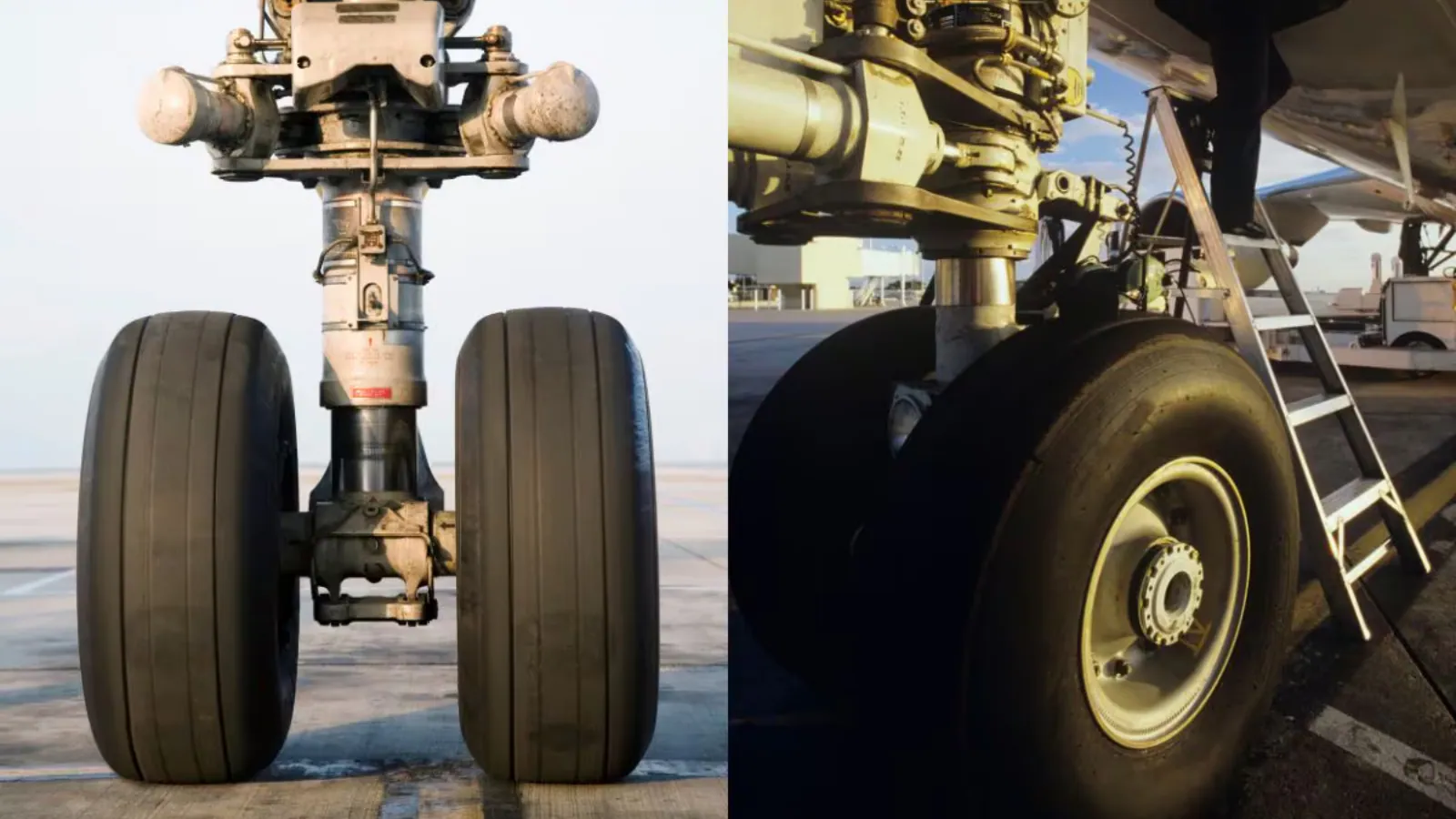By News18 Parishmita Saikia
For many of us, air travel is a familiar part of modern life. Among the most exhilarating parts of a flight are take-off and landing. Yet, for some, these moments can be quite daunting. When a massive aircraft descends from the sky and makes contact with a solid concrete runway, the sheer pressure on the tyres is immense. Passengers often feel the jolt, giving a hint of the enormous forces at play.
It is, in fact, a marvel of engineering that aircraft tyres can endure such pressure multiple times a day without failure. But what exactly makes these tyres so incredibly durable?
What Are Aircraft Tyres Made Of?
Aircraft tyres are constructed from a specialised blend of synthetic rubber compounds, reinforced with materials such as aluminium, steel, and nylon. This robust composition enables them to withstand the enormous loads generated during landings, often several thousand tonnes.
Remarkably, each tyre weighs around 110 kilograms and is designed to function under extreme conditions without bursting.
Role Of Air Pressure In Aircraft Tyres
Brandy, a tyre specialist at Goodyear, explains that aircraft tyres are inflated to much higher pressures than standard vehicle tyres; twice that of lorry tyres and six times that of car tyres.
This high pressure significantly strengthens the tyre鈥檚 structure, enabling it to support the immense weight of the aircraft during take-off and landing. Rather than being filled with regular air, these tyres are inflated using nitrogen.
Why Is Nitrogen Used In Aircraft Tyres?
Nitrogen, an inert and non-flammable gas, is preferred over compressed air due to its stability. It is less affected by fluctuations in temperature and pressure, reducing the risk of combustion from friction-generated heat.
Thanks to this, aircraft tyres can safely absorb the high-speed impact of landing without overheating or bursting. These tyres are capable of withstanding pressure up to 900 pounds per square inch.
How Long Do Aircraft Tyres Last?
A typical passenger aircraft is fitted with around 20 tyres. Each tyre can endure approximately 500 landings before it requires retreading, that is, a process in which a new tread is applied to extend its life.
This can be done up to seven times, meaning a single tyre may be used for up to 3,500 landings. However, nosewheel tyres generally wear out faster than main gear tyres due to different stress patterns.
How Are Aircraft Tyres Changed?
Changing an aircraft tyre is no small task. It generally requires two skilled technicians and can take up to an hour. The aircraft is raised just five centimetres, barely enough to fit a thumb beneath the tyre.
Technicians begin by removing the hubcap and reducing the pressure from 200 psi to 30 psi to prevent accidents when loosening bolts. One technician protects the axle sleeve while the other uses a lifting tool to extract the tyre. Once removed, the sleeve is greased and the new tyre is fitted.
How Are These Tyres Manufactured?
Aircraft tyres are engineered to endure some of the harshest conditions any vehicle component can face. Manufacturers begin by creating a prototype and subject it to rigorous testing; well beyond expected performance levels. These tests assess the tyre鈥檚 speed capabilities, load tolerance (up to 38 tonnes), and durability under varying conditions.
Unlike car tyres, which have a block-pattern tread, aircraft tyres are designed with smooth grooves to aid water drainage during landings on wet runways.
Why Is There Smoke During Landing?
You might notice smoke coming from the tyres when a plane lands. This happens because, at the moment of touchdown, the tyres are not yet spinning. Instead, they skid against the runway until their rotational speed matches the aircraft鈥檚 speed.
This friction causes a brief burst of smoke, which is perfectly normal and accounted for in the tyre鈥檚 design.
So, the next time you fly and feel the bump of landing, take a moment to appreciate the complex engineering beneath you. Aircraft tyres are built not only for strength but for safety, and thanks to continuous innovation, they rarely fail. Manufacturers leave no room for compromise when it comes to protecting passengers in the skies.
